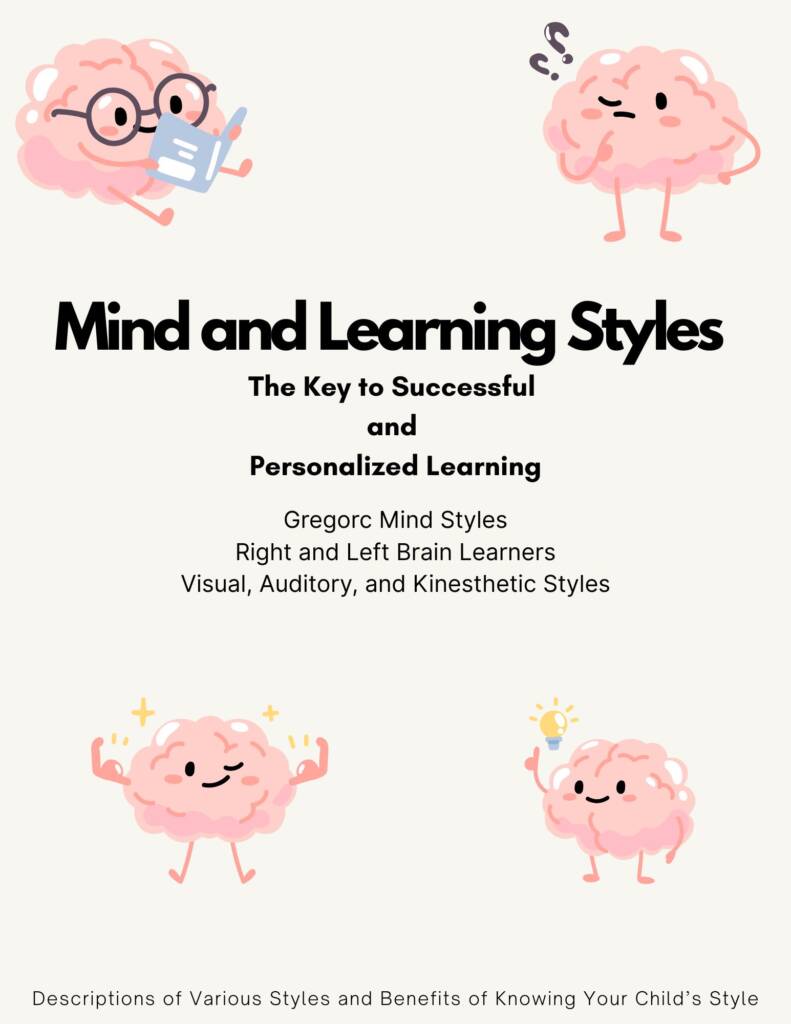This post about the Delight Directed Homeschool Method is the ninth post in a 10 part series about different homeschooling methods.
This series includes the following homeschooling methods:
- Classical Homeschool
- Charlotte Mason
- Montessori
- Unschooling
- Traditional or School at Home
- Project Based Learning
- Eclectic or Mixed Approach
- Unit Studies or Thematic
- Delight Directed or Interest Led Learning
- Waldorf
Embracing Delight Directed Learning: How to Nurture Curiosity and Creativity in Your Homeschool
Imagine a homeschool day where your child eagerly dives into learning, not because of rigid lesson plans or required textbooks, but because they’re genuinely excited about the topic.
That’s the magic of the delight directed homeschool method—an interest-based approach that taps into your child’s natural curiosity, creativity, and enthusiasm.
In this post, we’ll explore what delight directed or interest-based learning is, why it works, how to implement it in your homeschool, and practical tips to make it both enriching and manageable.
You can always include the delight directed homeschool method idea within other homeschool methods such as unschooling, project based learning, and unit studies.
We were eclectic homeschoolers where we would include ideas from a number of different methods to meet our needs and interests, such as some classical, Charlotte Mason, unit studies, project based learning, and delight directed learning.
If you’ve ever felt like traditional homeschool methods were stifling your child’s joy, or if you want to build a learning environment that prioritizes passion, collaboration, and creativity, delight directed learning might be the fresh start you’ve been looking for and may be just right for your child’s learning style.
What Is the Delight Directed Homeschool Method?
Delight directed learning is a child-centered educational approach that follows your child’s passions and interests as the foundation for learning.
Instead of adhering strictly to a preset curriculum, you co-create learning opportunities based on what your child is curious about.
In this model, the child’s interests lead the way, and the parent acts as a guide, facilitator, and partner in learning. The idea is to spark intrinsic motivation, helping your child fall in love with learning—not just jump through academic hoops.
Key Characteristics of Delight Directed Learning
- Child-led and Collaborative: Children choose topics or projects they’re excited about. You collaborate with them to create a rich learning experience.
- Creative and Expressive: Learning often includes art, music, storytelling, and imaginative play.
- Flexible and Non-linear: There’s no fixed sequence. The learning path evolves based on your child’s exploration.
- Hands-on and Engaging: Encourages doing, creating, and experiencing—ideal for kinesthetic and visual learners.
- Social and Community-Oriented: Learning often happens through group projects, co-ops, or shared experiences.
Why Choose the Delight Directed Homeschool Method?
1. Motivation Comes Naturally
When children pursue subjects they love, motivation is automatic. You don’t need bribes or battles. Instead, you’ll see focus, initiative, and enthusiasm.
2. Deep Learning Through Passion
Interest-based learning allows your child to dive deep. They don’t just skim the surface—they ask questions, investigate, and explore creatively, leading to a deeper understanding and retention of knowledge.
3. Encourages Independence and Confidence
As children take charge of their learning, they develop autonomy, decision-making skills, and confidence. They begin to trust their instincts and become lifelong learners.
4. Supports a Wide Range of Learners
Delight-directed learning is highly adaptable, making it ideal for neurodivergent learners, gifted children, or kids who struggle with traditional methods.
5. Brings Joy Back to Homeschooling
One of the greatest rewards of this approach is the joy it brings—to both the child and the parent. Watching your child flourish in a supportive, interest-driven environment is deeply fulfilling.
What Does the Delight Directed Homeschool Method Look Like in Practice?
Scenario 1: The Budding Paleontologist
Your child becomes obsessed with dinosaurs. Instead of pausing that interest to stay “on schedule,” you lean in. Together, you:
- Read books and watch documentaries about dinosaurs
- Create a dino dig using sand and small bones
- Measure dinosaur lengths using tape on the floor (math!)
- Draw and paint prehistoric scenes (art)
- Write a story about being a dinosaur explorer (language arts)
All major subjects are naturally integrated into one passion-fueled project.
Scenario 2: The Aspiring Musician
Your child loves music. So you explore:
- The science of sound waves (physics)
- Music from various cultures and historical periods (social studies)
- Learning to play an instrument (fine arts + discipline)
- Writing song lyrics and composing (language arts + creative expression)
- Recording and editing their own music (tech skills)
Suddenly, the learning feels authentic, relevant, and empowering.
How to Implement the Delight Directed Homeschool Method
1. Observe Your Child’s Interests
Pay attention to what excites your child. What do they love talking about? What books do they choose? What games or activities do they get lost in? These clues point to fertile ground for exploration.
Keep an “Interest Journal” or list of topics your child brings up, and revisit it when planning activities or mini-units.
2. Invite Curiosity with Open-Ended Questions
Rather than always leading, ask:
- “What do you want to learn more about this week?”
- “What kind of project would be fun to work on?”
- “Is there something you’ve always wondered about?”
Give your child space to brainstorm ideas and express their curiosity.
3. Be a Learning Partner, Not Just a Teacher
In this model, you’re not just the lesson-giver—you’re a collaborator. Explore resources together, help gather supplies, model curiosity, and work on projects alongside your child.
This partnership strengthens your relationship and shows that learning is a shared adventure.
4. Set Gentle Goals and Provide Structure When Needed
Delight-directed doesn’t mean chaotic or aimless. Structure still matters—it just serves your child’s passions rather than controlling them.
Help your child set achievable goals, track progress, and celebrate accomplishments. A simple planner or checklist can bring clarity without stifling creativity.
5. Curate an Environment Rich in Possibilities
Make your homeschool space inviting and inspiring:
- Keep art supplies and craft materials readily available
- Display maps, books, puzzles, and tools
- Use interest-led curriculum supplements or unit studies
- Incorporate games, music, and documentaries
- Encourage outside-the-box resources like makerspaces or virtual museum tours
The more stimulating the environment, the more likely your child is to stumble into inspiration.
What About the Core Subjects?
A common concern is how to ensure your child still learns math, reading, and writing. Here’s how delight-directed learning can integrate core skills:
Language Arts:
- Journaling about daily interests
- Writing stories, comics, or research papers
- Reading living books related to their favorite topics
Math:
- Budgeting for a creative project
- Measuring in cooking, building, or crafting
- Using math apps or games they enjoy
Science:
- Conducting experiments tied to a child-led topic
- Observing nature and documenting findings
- Visiting science centers or maker fairs
Social Studies:
- Exploring cultures through food, music, and storytelling
- Learning geography through travel plans or interest-led mapping
- Reading biographies or watching documentaries about heroes in their area of interest
Delight directed learning doesn’t avoid academics—it just wraps them in a blanket of enthusiasm and relevance.
Tools and Materials for Delight Directed Learning
You don’t need a set curriculum to begin. Here are some ideas to support interest-based exploration:
- Library cards (your best friend!) I was one of those moms who brought a wicker laundry basket for our books we checked out.
- Art supplies (paints, clay, paper, recycled materials)
- Music instruments or digital creation tools
- Science kits or nature journals
- Board games, puzzles, and strategy games
- Laptops or tablets (for research, digital storytelling, or design)
- Group activities or co-op classes to explore social and collaborative learning
- An assortment of materials to explore is great
Is This Method Right for Your Family?
Delight directed learning is especially suited for families who:
- Prefer a flexible, relationship-focused homeschool style
- Value creativity, critical thinking, and self-expression
- Want to build community through collaborative projects or co-op learning
- Enjoy learning alongside their children
- Have children who resist rigid curriculum or thrive when allowed to follow their passions
It’s also a great approach to blend with other methods—many eclectic, unschooling, project based and unit study homeschoolers incorporate delight directed learning into their toolbox.
Here is a resource I created to assist you in determining your child’s learning and thinking styles with assessments and descriptions and which homeschool method and curriculum is the right for one for them. You will find descriptions of various learning and thinking styles, assessments to determine your child’s styles, suggested teaching methods, materials, and curriculum with links for you to consider that match your child’s styles.

Tips for Success
- Start Small: Try one project based on your child’s interest to see how it flows.
- Celebrate the Process: Focus on exploration and discovery, not just polished outcomes.
- Document Progress: Keep a portfolio or digital folder of projects, writing, and creative work.
- Be Patient: Some interests are short-lived—others blossom over time. Stay flexible.
- Model Passion: Let your kids see you explore your own interests. Learning is contagious!
Frequently Asked Questions
Is the delight directed homeschool method the same as unschooling?
Not quite. They overlap, but unschooling is often more radically child-led and avoids formal lessons entirely, while delight directed learning may still incorporate structure, especially in foundational subjects, guided by the child’s interests.
How do I begin using this approach if we’ve been using a traditional curriculum?
Start small. Allow your child to choose a project or topic to explore outside of core subjects. Gradually build more of the day around their interests, while easing away from rigid schedules.
How do I identify my child’s interests?
Watch how they spend free time, what topics they talk about, what books they gravitate toward, and ask open-ended questions like, “What would you love to learn more about?”
How do I ensure my child is learning everything they need to?
You can track progress through portfolios, journaling, or assessments. Use interest-led topics to teach broader skills (e.g., researching dinosaurs can teach reading, writing, science, and even math).
How do I cover essential subjects like math or grammar if my child isn’t naturally drawn to them?
Integrate these subjects creatively through their interests (e.g., budgeting for a Lego set, writing a story about a favorite video game). Some parents still use structured materials for core skills but let children choose the context.
What does a typical day look like in a delight directed homeschool?
There’s no “typical,” but it often includes a relaxed schedule where mornings might be for core work (if used), and afternoons are for exploring interests, projects, field trips, or creative pursuits.
Do I need to plan lessons, or let my child take the lead completely?
You can act as a facilitator—curating resources, offering ideas, and helping set goals—but the child largely directs the subject matter and pace.
Will my child be prepared for college or the real world?
Yes—many students thrive because they’ve learned how to be independent, self-motivated learners. You may need to help them translate their learning into transcripts, portfolios, or standardized test readiness.
What if my child’s interests change constantly?
That’s natural. Let them explore widely—those shifts are part of learning. Over time, they often develop deeper passions or return to earlier ones with new insight.
How do I overcome the fear that they’re “falling behind”?
Understand that “grade levels” are arbitrary. Progress looks different in child-led learning, but it’s real. Track growth over time and trust the process.
Final Thoughts
Delight directed learning is more than a method—it’s a mindset. It’s about trusting your child’s natural desire to learn, nurturing their unique gifts, and creating an educational journey that feels joyful, meaningful, and alive.
In a world that too often values standardization, this approach invites your child to be fully themselves—curious, creative, and confident.
So the next time your child asks, “Can we learn about volcanoes?” or shows an interest in making their own comic book, say yes. Follow that spark. You never know what amazing things it might ignite.






